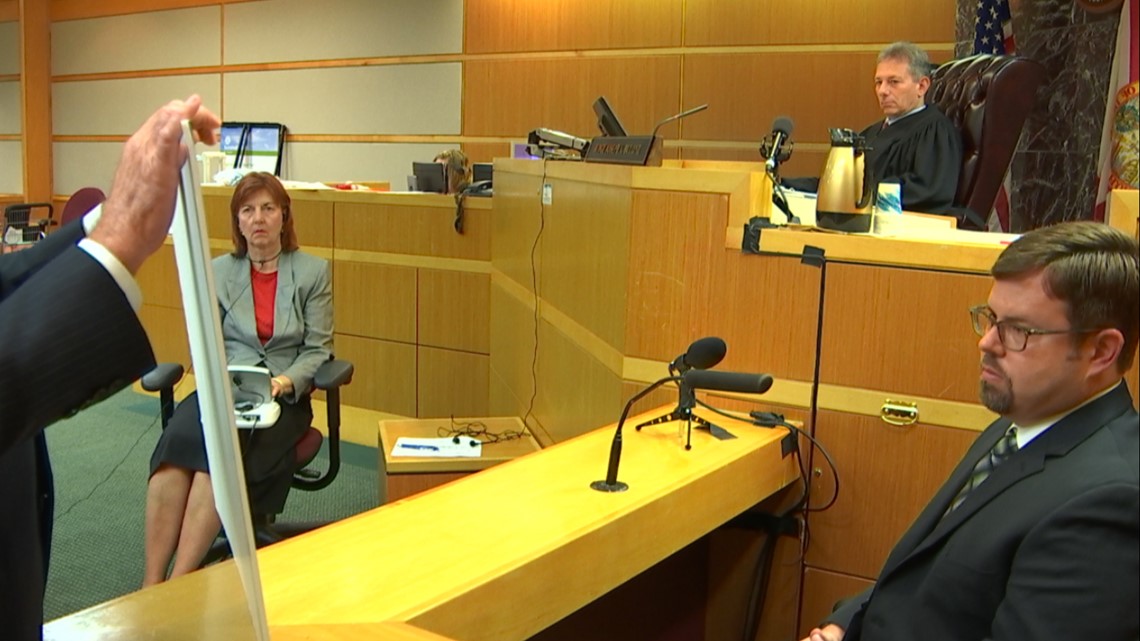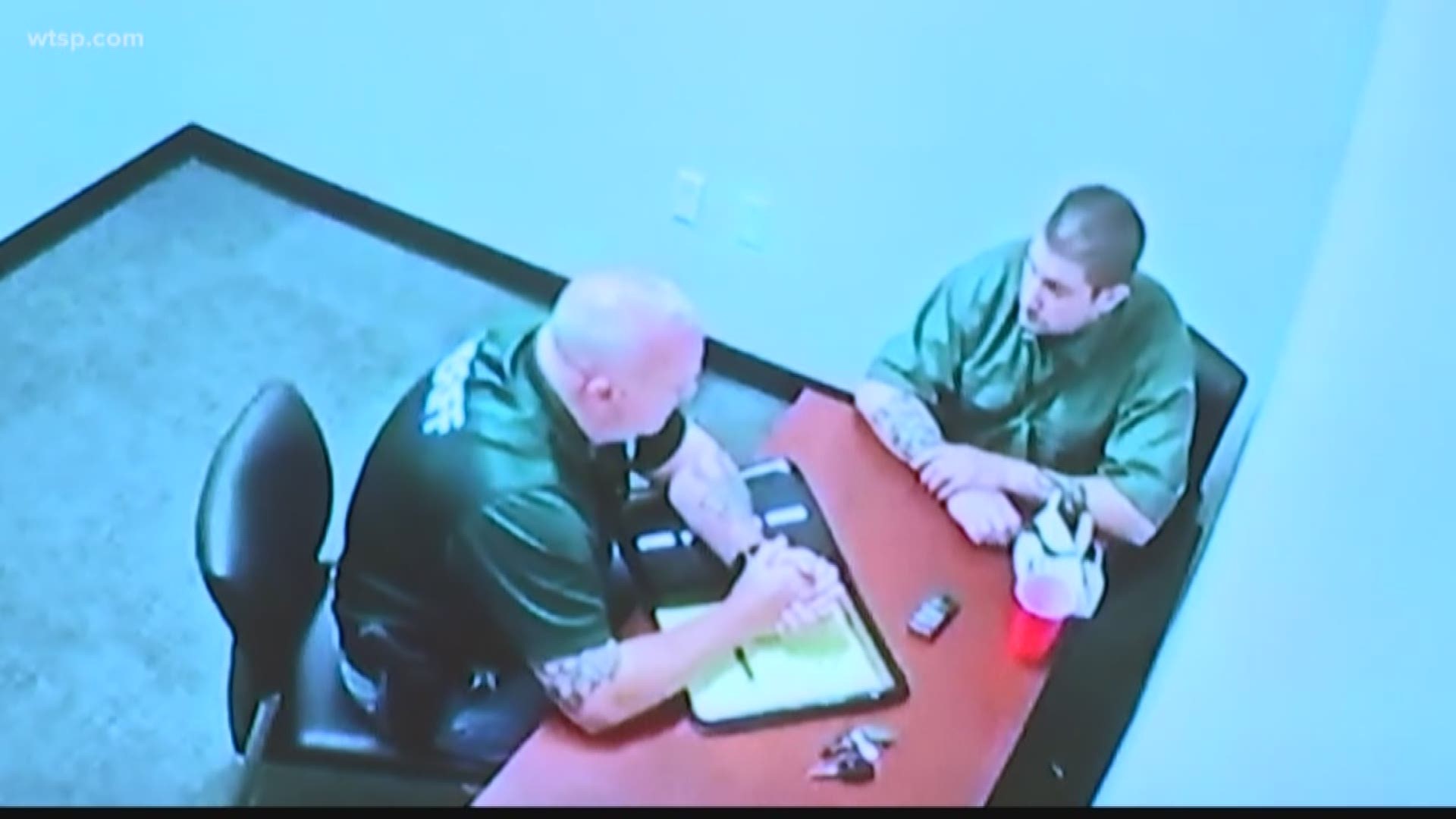PINELLAS COUNTY, Fla. — On Day 4 in the Michael Drejka manslaughter trial, jurors got to see and hear detectives interrogating the gunman hours after the shooting.
Drejka has admitted to shooting Markeis McGlockton, outside a Clearwater convenience store in July of last year. The confrontation came after McGlockton’s girlfriend parked in a disabled persons’ space.


Jurors watched a slow-motion version of the confrontation outside the convenience store -- something defense attorneys had opposed, saying Michael Drejka had to react in real-time.
That’s what Drejka told detectives during an hourlong video interrogation played for the jury, during which Drejka says he fired in self-defense.
“I never been in that situation ever,” Drejka explained to the detectives. “I felt kicks were coming. I’m thinking he’s coming to do the rest of it.”


The detective asked Drejka, what he meant by “the rest of it.”
“Whatever beatings were coming after that,” says Drejka.
“Did you see him with a firearm?”
“No, sir, I didn’t see him with anything,” Drejka answers.
During the interrogation, Drejka, who says he has no formal law enforcement training, refers to self-defense terminology cops usually learn during training. That's important as prosecutors try to convince jurors Drejka was a “wannabe” police officer who had taken it upon himself to enforce parking rules, even at the risk of confrontation.
“Wouldn’t it be best, instead of putting yourself in that type of circumstance, to notify law enforcement?” one of the investigators asked in the interview
“You’ll never make it unless you’re parked there,” Drejka said. “By the time I call, they would be gone.”
When use-of-force expert Roy Bedard was called to testify, he was curious about Drejka’s training and why he used the term "21-foot rule."
“That’s something that has been talked about and studied in law-enforcement circles for 30 years. It’s unusual for average people to know about that,” he said.
The 21-foot rule refers to the distance that an attacker can cover in the time it takes them to draw and fire a weapon in self-defense. It's something taught during police training.
Bedard was also wondered why Drejka would use the term "force multiplier rule," which is generally used by military members in combat.
During opening statements, State Attorney Fred Schaub explained to the jury that they would hear Drejka explain the force multiplier rule: “If they have an army of 100, you better have an army of 200.”
Bedard testified that neither the 21-foot rule or the force multiplier rule applies to the Michael Drejka case.
The jury also heard testimony from the medical examiner who performed the autopsy on Markeis McGlockton.
Dr. Noel Palma said the bullet that killed McGlockton had entered from his left side traveling upward into his body, not straight on. Prosecutors say that further suggests McGlockton was turning away from Drejka when that fatal shot was fired.
Schaub quietly took a moment to let McGlockton's family and friends know they were about to share photos of McGlockton’s corpse with the jury.
The entire group quietly left the courtroom. After about 20 minutes friends and family of the McGlockton’s returned.
By the time the family returned to the courtroom, Dr. Bruce Goldberger, a forensic toxicologist, was on the stand explaining the level of stimulants listed in McGlockton’s autopsy report.
The autopsy report included a toxicology exam, which is a standard procedure for homicide cases. The toxicology exam revealed McGlockton had traces of MDMA, or Ecstasy, in his blood and urine.
Goldberger explained that MDMA would not have led McGlockton to act violently.


With that, the state rested its case against Drejka.
Drejka’s defense team first called pharmacology expert, Dr. Daniel Buffington, to the stand who explained how MDMA works in the human body.
“This is a dangerous drug that has unpredictable side effects,” he said.
Some of the side effects Buffington listed for the jury included; impulsivity, agitation, aggression, emotional instability, paranoia confusion, and altered perceptions.
Buffington said after evaluating the video, he concluded that McGlockton displayed physical aggression, which is one of the side effects of MDMA.
The arguments could be finished by Friday, with deliberations possibly beginning that evening, the judge said.
What other people are reading right now:
- 'God blessed me with a platform to speak.' Man who saved baby near highway continues to spread generosity years later
- President Trump approves student debt forgiveness for disabled veterans
- SCARY VIDEO: Rope snaps seconds before slingshot ride launches at Florida park
- 'Hero' neighbor shoots, kills man in domestic violence situation, sheriff says
- Few clues, Gulf Stream making search for missing firemen extremely difficult
►Make it easy to keep up-to-date with more stories like this. Download the 10News app now.
Have a news tip? Email desk@wtsp.com, or visit our Facebook page or Twitter feed.

